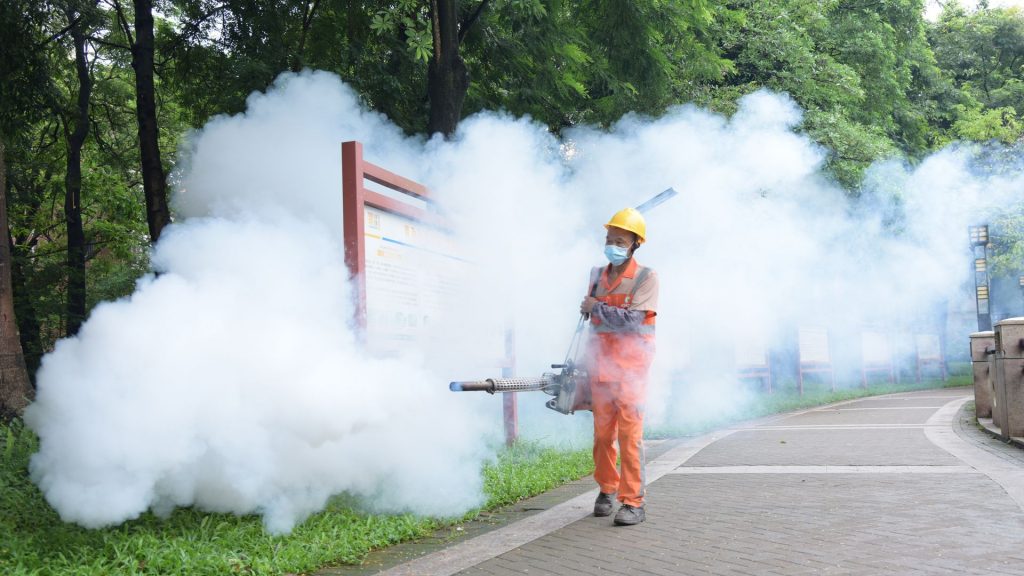Lockdowns are back: China fighting new virus with drones, enforcement

Infected mosquitoes have ignited an outbreak of chikungunya virus in southern China, sending ripples of concern through public health circles. As the tiny winged carriers multiply, thousands of cases have already been reported, forcing authorities to act swiftly to halt the spread.
Mosquito-borne outbreak grips southern China
The manufacturing hub of Foshan, near Hong Kong, is reporting the highest number of cases. Mosquito bites in this area are infecting people and fueling the virus’s spread.
According to the CDC, individuals have high levels of the virus in their bloodstream during the first few days after being bitten, which means the virus can spread through blood transfusions, blood draws or contact with infected blood in lab settings. The agency stresses that chikungunya does not spread through coughing, sneezing or casual contact.
China deploys sprays, nets, drones — and fines
China has reported more than 7,000 cases, though the pace of new infections is starting to slow, according to the Associated Press. In response, workers have been seen spraying insecticide throughout the city, targeting residential neighborhoods and construction sites where mosquitoes are likely to breed. Mosquito nets are also being used as a protective barrier, while drones are deployed to help control the spread of the virus by detecting pools of standing water.
The New York Times reports quarantine wards are resurfacing in China, similar to those made infamous during the COVID-19 pandemic, where patients must be isolated until they produce a negative test. Chinese officials say about 95% of hospitalized chikungunya patients recover and are discharged within a week, according to the BBC.
In Foshan, officials have released thousands of fish into public ponds to help control the mosquito population. Residents have been told to clear any standing water around their homes to prevent mosquito breeding, or face fines of up to $1,400.
Decades of chikungunya spread
Chikungunya is a disease usually found in subtropical and tropical regions such as the Americas, Asia and Africa, according to the World Health Organization. In an updated fact sheet, WHO notes that its symptoms closely resemble those of other mosquito-borne illnesses like Zika and dengue, which can lead to misdiagnosis. Common symptoms include joint swelling, muscle pain, headache, nausea, fatigue and rash.
Chikungunya virus, also known as CHIKV, first appeared in 1952 in the United Republic of Tanzania. More urban outbreaks followed 12 years later in Thailand and again in India during the 1970s.
Since 2004, the WHO says chikungunya outbreaks have increased in frequency and spread to more regions. This rise is partly due to changes in the virus that make it easier for Aedes albopictus, commonly known as Asian tiger mosquitoes, to transmit it, as well as its introduction into populations with little to no prior immunity.
Today, chikungunya has been reported in over 110 countries across Asia, Africa, Europe and the Americas. The WHO hasn’t found a confirmed case of a chikungunya in an American who hadn’t recently traveled to another country since 2019. On some islands, outbreaks have slowed or stopped after many people became infected and developed immunity, but in many countries where large groups remain unexposed, the virus continues to circulate.
Surge of cases in 2025 across four continents
Since early 2025, about 240,000 chikungunya cases and 90 deaths have been reported across 16 countries in the Americas, Africa, Asia and Europe, the European Centre for Disease Prevention and Control says.
In the EU, there were 31 local cases, 30 in France and one in Italy. The French island of Réunion reported over 54,000 cases with a moderate outbreak alert, while Mayotte continues to face intense, widespread transmission with over 1,000 cases.
Travel advisory issued for high-risk countries
It’s not just China on alert. The U.S. issued a level 2 travel advisory on Friday, Aug. 1. The CDC warns that travelers face a higher risk of exposure to chikungunya in several countries, including Brazil, India, Colombia, Mexico, Pakistan and Thailand, even in places without active outbreaks.
The CDC recommends vaccination for travelers spending extended time in higher-risk regions, even if there’s no active outbreak.





